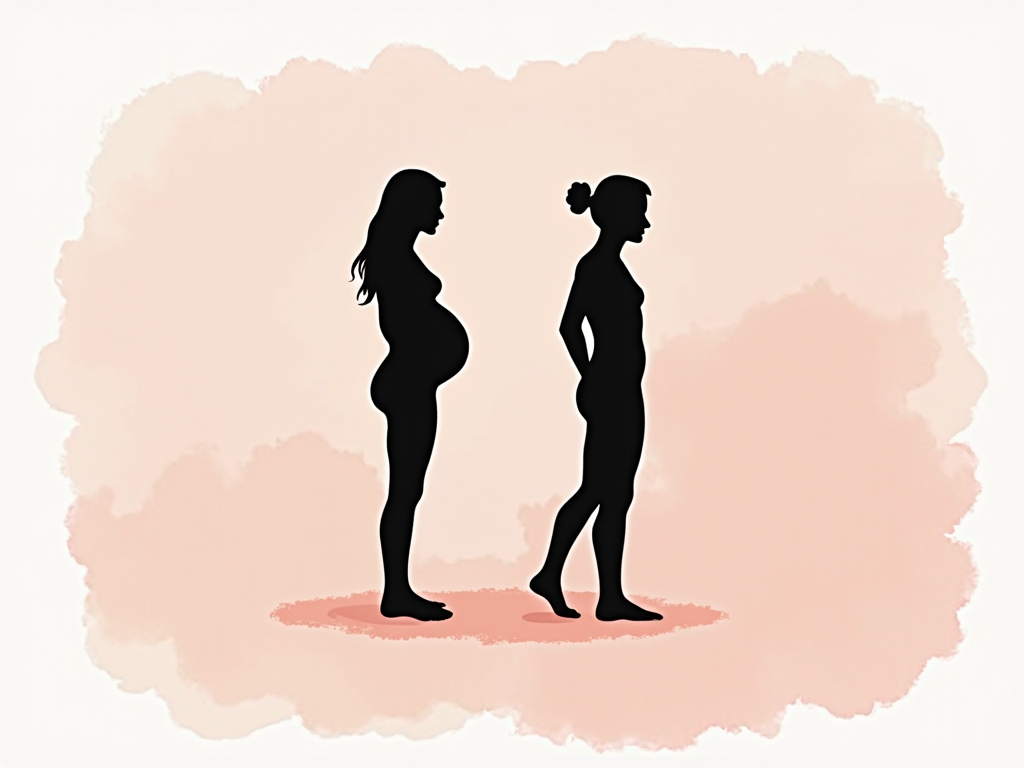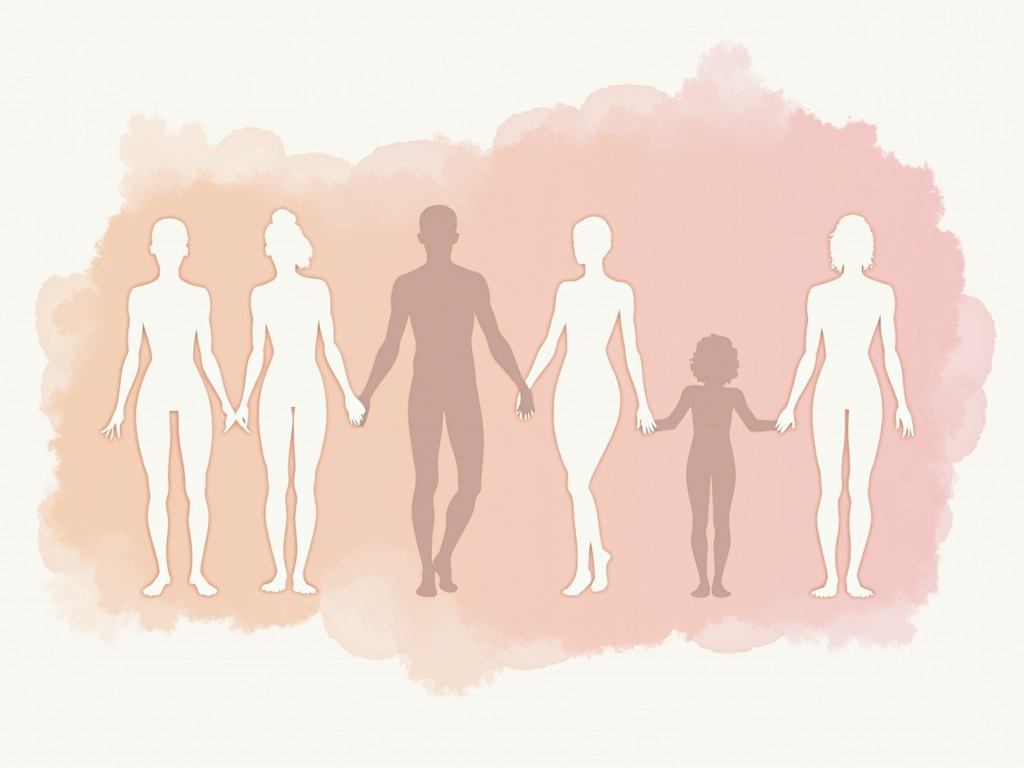
What Age Does Your Butt Stop Growing? Changes in Your Buttocks Through the Decades
Reading time: 8 minutes
Table of Contents
- Understanding Butt Growth: The Science Behind Your Behind
- The Teenage Years: Prime Time for Posterior Development
- Your 20s & 30s: Maintenance, Muscle, and Metabolism Shifts
- Middle Age Changes: What Happens to Your Buttocks After 40
- Senior Years: Adapting to Natural Transitions
- Lifestyle Factors That Shape Your Rear View
- Butt Enhancement: From Exercise to Other Options
- Embracing Your Behind: A Framework for Body Positivity
- Frequently Asked Questions
Understanding Butt Growth: The Science Behind Your Behind
The human buttocks represent far more than just a place to sit. These powerful muscles—primarily the gluteus maximus, medius, and minimus—are essential for our most fundamental movements. But when exactly do these muscles and the surrounding tissue stop developing, and what changes can we expect throughout our lives?
Before diving into age-specific changes, let’s understand the anatomy of what we’re discussing. Your buttocks consist of:
- Gluteal muscles: The powerhouse trio of gluteus maximus (the largest), gluteus medius, and gluteus minimus
- Fat deposits: Subcutaneous fat that contributes to shape and size
- Connective tissue: Helping everything maintain structure and form
Dr. Samantha Wei, sports medicine specialist, explains: “The development of the buttocks is a complex interplay between genetics, hormones, nutrition, and physical activity. There’s no single age when growth definitively stops, but rather a series of transitions influenced by these factors throughout life.”
The Role of Hormones in Buttock Development
Hormones play a crucial role in how and when your buttocks develop. During puberty, estrogen promotes fat deposition in the hips, thighs, and buttocks for women, creating the gynoid (pear-shaped) pattern that’s evolutionarily associated with fertility and childbearing capacity.
For men, testosterone drives muscle development, including in the gluteal region, though typically with less fat accumulation than women experience. These hormonal influences continue throughout life but shift in intensity and impact as we age.
Genetic Factors: Your Blueprint for Buttock Shape
Your genetic makeup significantly determines your fundamental buttock shape and size potential. Studies of identical twins have shown that body fat distribution patterns, including in the buttocks, are approximately 70% heritable.
Take identical twins Mia and Maya Thompson, who participated in a body composition study at UCLA. Despite following different exercise regimens for five years, their buttock shapes remained remarkably similar in structure, though muscle tone varied. This case study illustrates how genetics creates boundaries within which lifestyle factors can influence your appearance.
The Teenage Years: Prime Time for Posterior Development
The teenage years mark the most dramatic period of buttock development for most people. During puberty, typically between ages 11-16 for girls and 12-17 for boys, several factors combine to shape your future behind:
- Hormonal surges trigger fat redistribution and muscle development
- Growth spurts affect height, weight, and proportions
- Skeletal maturation establishes hip width and pelvic structure
For girls, this often means a relatively rapid increase in buttock size during early-to-mid puberty as estrogen levels rise. Boys typically see more gradual development with greater emphasis on muscle over fat deposits.
Carlos Mendez, certified adolescent development specialist, notes: “Many teens become hyperaware of their changing bodies during this time. It’s important to understand that the development happening during adolescence is laying groundwork for adult body composition, but it’s not the final word on how your body will look throughout life.”
Case Study: Adolescent Body Image & Buttock Development
Sixteen-year-old Jasmine struggled with body image after developing curves earlier than her peers. Working with a counselor, she learned to understand the normal variations in development timing. “I thought something was wrong with me,” she shared. “Learning that bodies develop on different schedules helped me accept my changing shape.” By 19, many of her peers had developed similar proportions, reinforcing that development continues at variable rates throughout the teen years.
Your 20s & 30s: Maintenance, Muscle, and Metabolism Shifts
Contrary to popular belief, your buttocks don’t stop developing completely after puberty. Your 20s and 30s represent a period where your body composition continues to evolve, though more subtly and increasingly influenced by lifestyle factors.
Natural Changes in Your 20s
For most people, the early 20s represent the final stage of physical maturation. By around age 21-25, most women have reached their adult hip width, though the distribution of muscle and fat in the buttocks can still change. Men might continue developing muscle mass into their late 20s as testosterone levels remain high.
During this decade, most people experience:
- Stabilization of overall body shape
- Peak muscle-building potential
- Strong response to exercise interventions
Fitness trainer Deon Williams explains: “Your 20s are the golden decade for sculpting your ideal physique, including your glutes. Your body responds quickly to resistance training, and recovery times are optimal. Many clients find they can significantly change their buttock shape through dedicated training during this period.”
The 30s Transition: Early Metabolic Changes
As you move through your 30s, subtle shifts begin to occur:
- Metabolism typically slows by about 2-3% per decade
- Natural muscle mass begins to decrease by approximately 3-5% per decade after 30 if not actively maintained
- Fat distribution patterns may shift slightly
- Women who have children may experience permanent changes to hip structure and fat distribution
These changes don’t mean your buttocks are “done developing”—rather, they’re entering a new phase where maintenance becomes increasingly important, and changes are more likely to result from your lifestyle choices than natural developmental processes.
Middle Age Changes: What Happens to Your Buttocks After 40
The post-40 years bring more noticeable transitions to the buttock region, driven by hormonal shifts, continued metabolic changes, and the cumulative effects of lifestyle choices.
Buttock Changes By Decade: Key Transitions
| Age Range | Primary Muscle Changes | Fat Distribution Changes | Hormonal Influences | Responsiveness to Exercise |
|---|---|---|---|---|
| Teens | Rapid growth and development | Initial adult pattern establishment | Strong puberty-driven changes | Very high |
| 20s-30s | Peak muscle potential | Relatively stable with lifestyle influences | Optimal adult hormone levels | High |
| 40s-50s | Natural decline begins (3-5% per decade) | Increasing tendency toward central distribution | Perimenopause/decreasing testosterone | Moderate (requires more consistency) |
| 60s+ | Accelerated muscle loss potential | Decreased subcutaneous fat, tissue laxity | Postmenopausal/lower hormonal support | Moderate-Low (but still beneficial) |
The Perimenopausal & Menopausal Transition for Women
For women, the perimenopausal years (typically beginning in the 40s) trigger significant changes in fat distribution patterns. Estrogen decline leads to:
- Reduced fat storage in the buttocks and thighs
- Increased tendency toward abdominal fat storage
- Gradual loss of tissue firmness and elasticity
Dr. Eliza Montgomery, gynecologist specializing in menopause, explains: “Many of my patients notice their body shape changing during perimenopause and menopause. The buttocks may become less full as fat redistributes to the abdomen. This isn’t just an aesthetic change—it reflects shifting metabolic patterns that can affect health risks.”
Testosterone Decline Effects in Men
Men experience their own hormonal transitions, though typically more gradually. Testosterone begins declining around age 40 at approximately 1-2% per year, affecting:
- Decreased muscle maintenance in the gluteal region
- Increased tendency toward fat accumulation
- Changes in overall body composition
Senior Years: Adapting to Natural Transitions
As we move into our 60s, 70s, and beyond, further changes occur in the buttock region. While these changes are natural, understanding them helps us adapt appropriately.
Key transitions during senior years include:
- Tissue laxity: Decreased collagen and elastin production leads to less firm appearance
- Muscle volume loss: Without resistance training, muscle atrophy accelerates
- Fat redistribution: Subcutaneous fat thins while visceral (internal) fat may increase
- Posture changes: Spinal alignment shifts can affect buttock appearance and function
Physical therapist Rebecca Chen observes: “Many of my older clients come in concerned about buttock flattening, which affects comfort when sitting and overall functionality. The good news is that targeted resistance training can significantly improve muscle tone and functionality at any age.”
The Importance of Muscle Maintenance
While some changes are inevitable, research consistently shows that resistance training remains effective well into advanced age. Studies of nursing home residents in their 80s and 90s demonstrate significant improvements in muscle mass, including gluteal muscles, with appropriate resistance training.
Muscle Responsiveness to Exercise By Age
(Percentage of potential muscle growth compared to peak potential in 20s)
Data based on meta-analysis of resistance training studies across age groups
Lifestyle Factors That Shape Your Rear View
While age-related changes are inevitable, lifestyle factors significantly influence how your buttocks develop and maintain over time. Understanding these factors gives you greater agency over your body’s changes.
Exercise: The Primary Sculptor
Exercise—particularly resistance training—has the most significant impact on buttock shape and firmness at any age. Key exercises that target the gluteal muscles include:
- Squats: Particularly wide-stance and deep variations
- Hip thrusts: Isolates the gluteus maximus effectively
- Lunges: Particularly reverse and walking variations
- Step-ups: Mimics natural movement patterns
- Deadlifts: Engages the entire posterior chain
Consistency is crucial. Kinesiology research indicates that visible changes in muscle tone typically require 8-12 weeks of consistent training, with maintenance requiring ongoing commitment.
Nutrition’s Impact on Buttock Composition
Nutritional factors significantly influence buttock composition through:
- Protein intake: Essential for muscle maintenance and development (recommended 1.6-2.2g per kg of bodyweight for active individuals)
- Overall caloric balance: Affects fat storage and loss patterns
- Micronutrients: Support collagen production and tissue health
Nutritionist Dr. Maya Patel explains: “Many clients come to me wanting to change their buttock shape through diet alone. While nutrition is crucial, it works in partnership with exercise. Protein timing around workouts can optimize muscle development, while overall nutrition supports tissue health and recovery.”
Butt Enhancement: From Exercise to Other Options
For those seeking to enhance their buttocks beyond what natural development and basic exercise provide, multiple approaches exist with varying degrees of invasiveness, cost, and permanence.
Progressive Exercise Approaches
Before considering more invasive options, many experts recommend systematic progressive training:
- Periodized strength programs: Systematically increasing resistance over 12-16 week cycles
- Variable resistance training: Using bands, chains, and other tools to challenge muscles differently
- Muscle activation techniques: Addressing dormant gluteal muscles (common from sedentary lifestyles)
Personal trainer Alisha Johnson shares: “I’ve worked with clients who were considering surgical enhancement but achieved their goals through dedicated training instead. The key was patient, progressive overload with proper form and recovery. The changes weren’t overnight, but they were sustainable and came with functional benefits too.”
Non-Surgical and Surgical Enhancement Options
For those seeking additional enhancement, options include:
- Non-surgical options:
- Specialized garments and padding
- Topical products (limited evidence for effectiveness)
- Injectable treatments (temporary, variable results)
- Surgical options:
- Brazilian Butt Lift (fat transfer)
- Buttock implants
- Sculptra and similar injectables (semi-permanent)
Plastic surgeon Dr. Anthony Richards cautions: “While surgical enhancement can achieve dramatic results, patients should understand both the risks and the maintenance requirements. Bodies continue to change with age, and procedures need to be considered within this context, not as permanent solutions that halt the aging process.”
Embracing Your Behind: A Framework for Body Positivity
Beyond the biological realities of how our buttocks develop and change, there’s an important psychological dimension to consider. Cultural ideals regarding the “perfect behind” have shifted dramatically throughout history and across cultures, highlighting the arbitrary nature of these standards.
Body image specialist Dr. Talia Washington offers this perspective: “Throughout history, different buttock shapes and sizes have been idealized. In Renaissance art, fuller figures were celebrated. The 1990s idealized a much smaller silhouette. Today’s preferences are just another point on this continuum—not an objective standard of beauty.”
Research shows that developing a positive relationship with your body, including your buttocks, improves overall quality of life, psychological wellbeing, and even adherence to healthy behaviors. This positive relationship includes:
- Appreciating your body’s functionality over appearance
- Recognizing the normal diversity of human body shapes
- Understanding that all bodies change throughout life
- Finding movement and nutrition approaches that feel sustainable and joyful
A balanced approach means pursuing health-promoting behaviors while accepting your body’s natural tendencies and limitations. As fitness educator James Chen puts it: “The healthiest approach is working with your body’s natural structure while challenging yourself appropriately—not fighting against your genetic blueprint.”
Your Body Through Time: Navigating Buttock Changes With Confidence
As we’ve explored throughout this article, your buttocks will naturally transform throughout life’s journey. Rather than viewing these changes as decline, consider them as transitions that can be navigated with knowledge, intentionality, and self-compassion.
Your Personal Action Plan:
- Assess your current status: Understand where you are in your developmental journey and what changes you might expect next
- Build sustainable habits: Incorporate resistance training that targets gluteal muscles 2-3 times weekly
- Support with nutrition: Ensure adequate protein and overall nutritional balance
- Track realistically: Document changes through measurements or photos every 8-12 weeks, not daily
- Consider your “why”: Clarify whether your goals are aesthetic, functional, or both
Remember that at any age, the factors within your control—exercise, nutrition, postural habits—have significant influence. While you can’t stop the aging process, you can absolutely shape how it unfolds for your body.
The most empowering perspective might be recognizing that our bodies, including our buttocks, tell the story of our lives—the activities we’ve enjoyed, the children we may have carried, the years we’ve lived. These changes aren’t flaws but rather evidence of a life fully experienced.
How might your relationship with your body change if you viewed its transformations through time not as something to fight against, but as a natural journey to support with informed choices?
Frequently Asked Questions
Is there a specific age when the buttocks stop growing completely?
There’s no single age when the buttocks definitively stop developing. Major developmental growth typically concludes in the late teens or early 20s (around 18-21 for women and 20-23 for men). However, changes continue throughout life due to hormonal fluctuations, lifestyle factors, and aging processes. Your buttocks can continue to change in terms of muscle mass, fat distribution, and tissue quality well into advanced age, though the rate and nature of these changes shift over time.
Can I still build muscle in my buttocks after 50?
Absolutely! Research conclusively demonstrates that muscle development remains possible at any age. While the rate of muscle protein synthesis does decline with age (making gains somewhat slower), studies show significant improvements in muscle mass and strength in people in their 70s, 80s, and even 90s who engage in resistance training. The key differences are that older adults typically need more recovery time between training sessions, may benefit from slightly higher protein intake, and must be more consistent with their training to see comparable results to younger individuals.
Why did my buttocks suddenly change shape in my 40s despite no weight change?
This common experience typically relates to hormonal changes during perimenopause for women or gradual testosterone decline for men. Even without weight changes, hormonal shifts alter fat distribution patterns—often decreasing gluteal and thigh fat while increasing abdominal fat. Additionally, natural muscle loss (sarcopenia) accelerates after 40 unless counteracted with resistance training. The combination of these factors can change buttock shape even when the scale doesn’t move. Targeted strength training and sufficient protein intake can significantly mitigate these changes by maintaining or building gluteal muscle to compensate for changing fat distribution.

Article reviewed by Tomasz Nowak, Marriage Mediator | Resolving Disputes with Compassion & Fairness, on May 2, 2025
